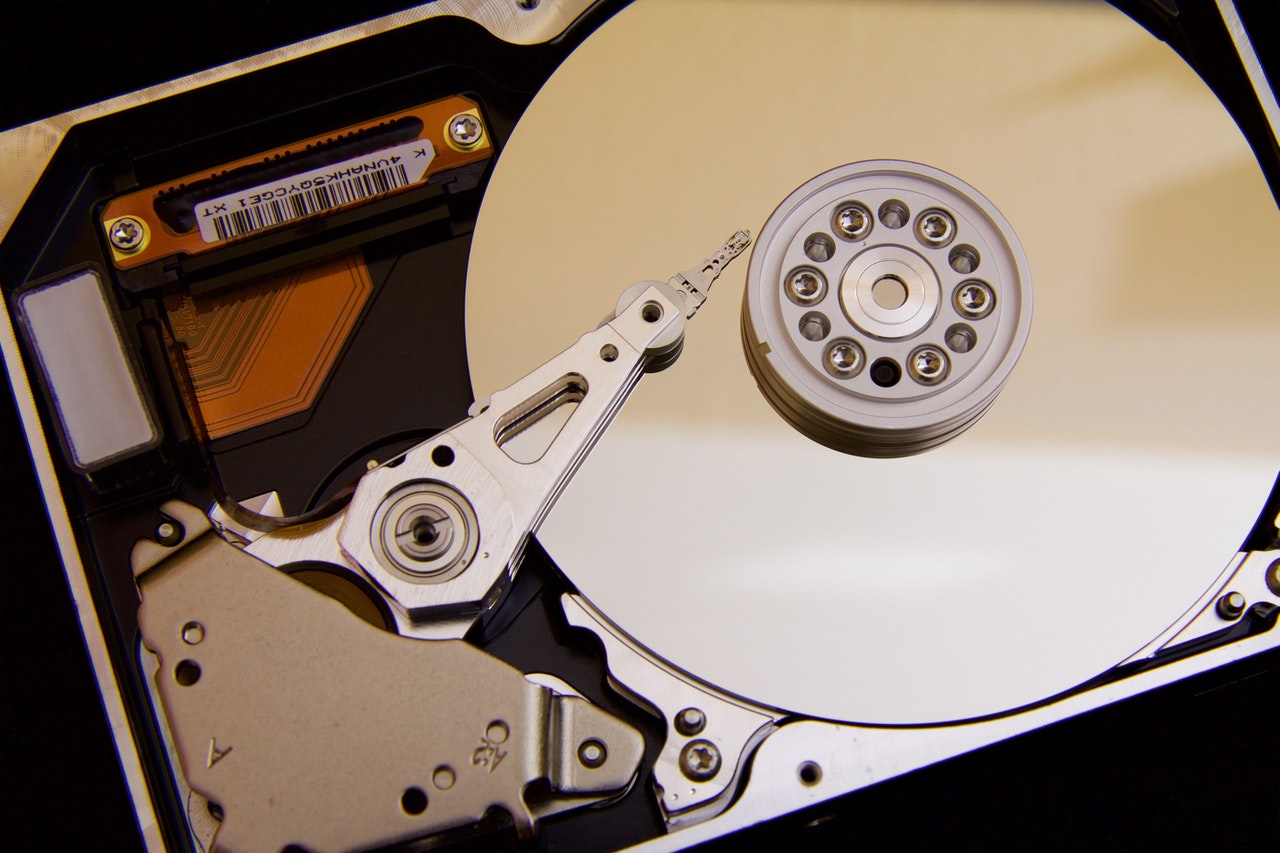Create a RAID mirror on your Raspberry Pi
In a recent article we discussed how you might Recover a Modicum of your Privacy using NextCloud to bring your secrets back in house, under your auspices. Should you decide to do so, you’re going to want to mirror your data to ensure it’s safe. This post will guide you through the process and share some links if you’de like a deeper understanding of the underlying technologies.
Prerequisites
- Two identical SSD drives
- Initialzed drives with GPartd
Inexpensive storage and USB3 controller
Inland 120 GB Solid State Drive
Run the blkid command to verify drives are accessible. They should show up as /dev/sda1 and /dev/sdb1
$ sudo blkid
/dev/mmcblk0p1: LABEL_FATBOOT="boot" LABEL="boot" UUID="4BBD-D3E7" TYPE="vfat" PARTUUID="738a4d67-01"
/dev/mmcblk0p2: LABEL="rootfs" UUID="45e99191-771b-4e12-a526-0779148892cb" TYPE="ext4" PARTUUID="738a4d67-02"
/dev/sda1: UUID="095b9486-fc9d-49df-9ff5-6ee5283c3305" TYPE="ext4" PARTUUID="3a26c570-c21b-4d01-8f4e-9de916a98793"
/dev/sdb1: UUID="968faf3b-80aa-4fa9-95ac-fedcad5f4148" TYPE="ext4" PARTUUID="d3339526-4fe1-4d0c-8062-843b36c26d9f"Create a redundant RAID-1 mirrored array using the mdadm command below. You may have to first install the command if you haven’t already.
# You may need to install mdadm
$ sudo apt install mdadm -y
# Define the RAID-1 configuration
$ sudo mdadm --create --verbose /dev/md/vol1 --level=1 --raid-devices=2 /dev/sda1 /dev/sdb1
# verify the raid array was created correctly
$ sudo mdadm --detail /dev/md/vol1
/dev/md/vol1:
Version : 1.2
Creation Time : Sat Dec 26 15:37:11 2020
Raid Level : raid1
Array Size : 117152768 (111.73 GiB 119.96 GB)
Used Dev Size : 117152768 (111.73 GiB 119.96 GB)
Raid Devices : 2
Total Devices : 2
Persistence : Superblock is persistent
Intent Bitmap : Internal
Update Time : Sat Dec 26 15:38:12 2020
State : clean, resyncing
Active Devices : 2
Working Devices : 2
Failed Devices : 0
Spare Devices : 0
Consistency Policy : bitmap
Resync Status : 5% complete
Name : nextcloudpi:vol1 (local to host nextcloudpi)
UUID : 796ac3b0:a426c35a:2a2601d2:5564dc2e
Events : 12
Number Major Minor RaidDevice State
0 8 1 0 active sync /dev/sda1
1 8 17 1 active sync /dev/sdb1Next you will preservce the RAID-1 configuration so that it can be found when you boot. Running the sudo won’t work, so you’ll have to first become the root user.
# the next command will need to be run as root
$ sudo -i
# preserve the RAID-1 config
$ sudo mdadm --detail --scan >> /etc/mdadm/mdadm.conf
# return to normal user using ^D or exit
$ exitCreate the file system
Now it’s time to create the file system, we’ll name it /dev/md/vol1, if you decide to change the name be sure to replace it in the commands that follow.
$ sudo mkfs.ext4 -v -m .1 -b 4096 -E stride=32,stripe-width=64 /dev/md/vol1
mke2fs 1.44.5 (15-Dec-2018)
fs_types for mke2fs.conf resolution: 'ext4'
Filesystem label=
OS type: Linux
Block size=4096 (log=2)
Fragment size=4096 (log=2)
Stride=32 blocks, Stripe width=64 blocks
7323648 inodes, 29288192 blocks
29288 blocks (0.10%) reserved for the super user
First data block=0
Maximum filesystem blocks=2176843776
894 block groups
32768 blocks per group, 32768 fragments per group
8192 inodes per group
Filesystem UUID: 04d7502e-dc5d-4c6e-ba1b-a2128f1baabf
Superblock backups stored on blocks:
32768, 98304, 163840, 229376, 294912, 819200, 884736, 1605632, 2654208,
4096000, 7962624, 11239424, 20480000, 23887872
Allocating group tables: done
Writing inode tables: done
Creating journal (131072 blocks): done
Writing superblocks and filesystem accounting information: doneAt this point you should be able to mount your new file system.
# mount filesystem to access with blkid
$ sudo mount /dev/md/vol1 /mnt
$ ls /mntTo use your new RAID-1 array you’ll need to add a mount point in /etc/fstab assigning the UUID. Let’s get the ID using blkid. Mine shows up as /dev/md127, yours may be the same of show up as /dev/md/vol1 or another if you renamed it.
$ sudo blkid
/dev/mmcblk0p1: LABEL_FATBOOT="boot" LABEL="boot" UUID="4BBD-D3E7" TYPE="vfat" PARTUUID="738a4d67-01"
/dev/mmcblk0p2: LABEL="rootfs" UUID="45e99191-771b-4e12-a526-0779148892cb" TYPE="ext4" PARTUUID="738a4d67-02"
/dev/sda1: UUID="796ac3b0-a426-c35a-2a26-01d25564dc2e" UUID_SUB="5b1e44b2-08e2-6fd3-ef02-09ec39c94a4a" LABEL="nextcloudpi:vol1" TYPE="linux_raid_member" PARTUUID="3a26c570-c21b-4d01-8f4e-9de916a98793"
/dev/sdb1: UUID="796ac3b0-a426-c35a-2a26-01d25564dc2e" UUID_SUB="19aef3eb-a8b9-8a46-e94e-0abfce9f50cb" LABEL="nextcloudpi:vol1" TYPE="linux_raid_member" PARTUUID="d3339526-4fe1-4d0c-8062-843b36c26d9f"
/dev/mmcblk0: PTUUID="738a4d67" PTTYPE="dos"
/dev/md127: UUID="04d7502e-dc5d-4c6e-ba1b-a2128f1baabf" TYPE="ext4"Making your changes permanent
With the UUID you can add the new mount point into /etc/fstab. We’ll backup the file first as a good practice.
# backup original fstab
$ sudo cp /etc/fstab /etc/fstab.bak
$ sudo vi /etc/fstab
# just before the bottom comments, make a space and enter the following
# on a single line (replace your_uuid with the UUID of your file system):
# i.e. UUID=your_uuid /mnt ext4 defaults 0 0
# My fstab entry would look like this, use your UUID from blkid:
UUID=394fd8f2-7b2a-474f-8e58-48b81a6ca8fb /mnt ext4 defaults 0 0That’s all there is to it!
References
